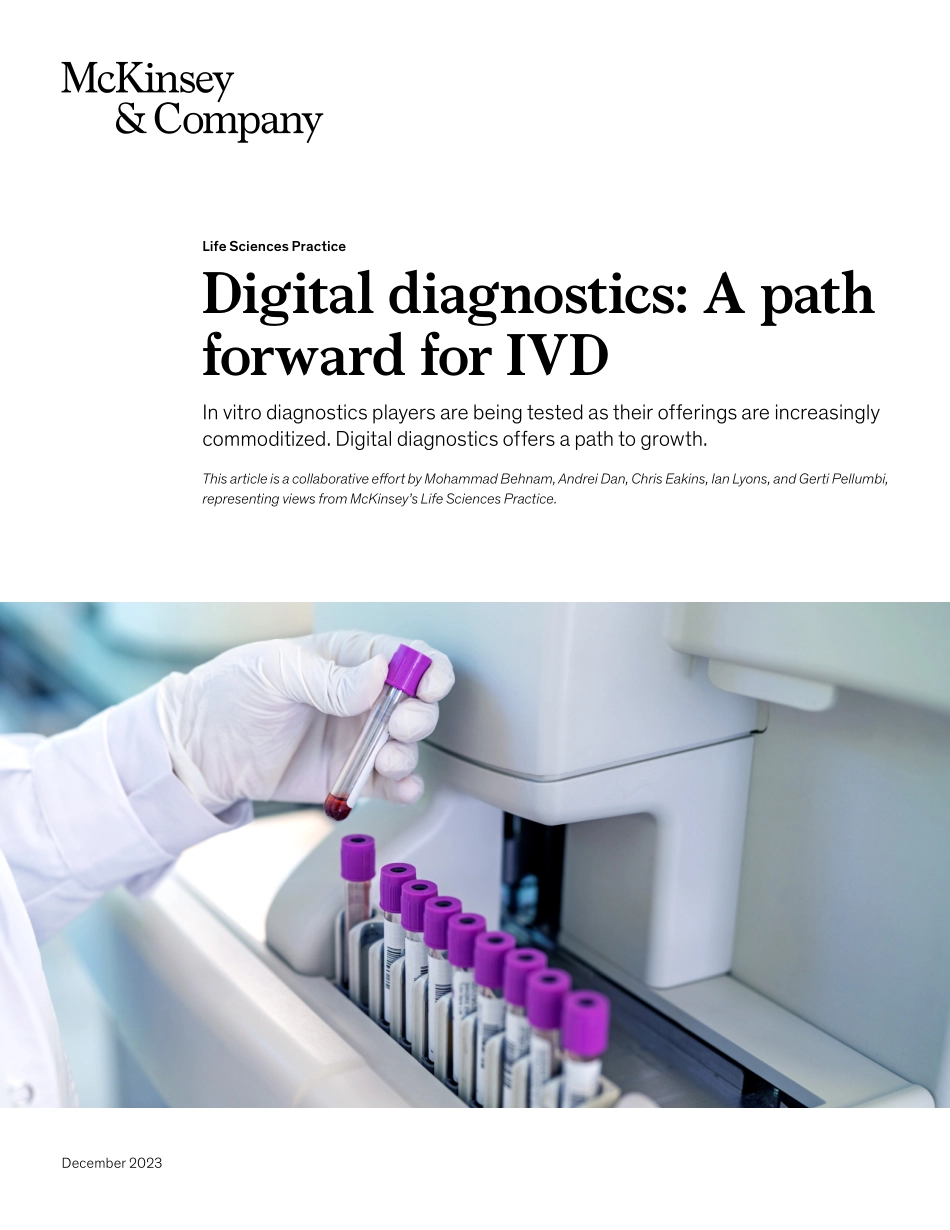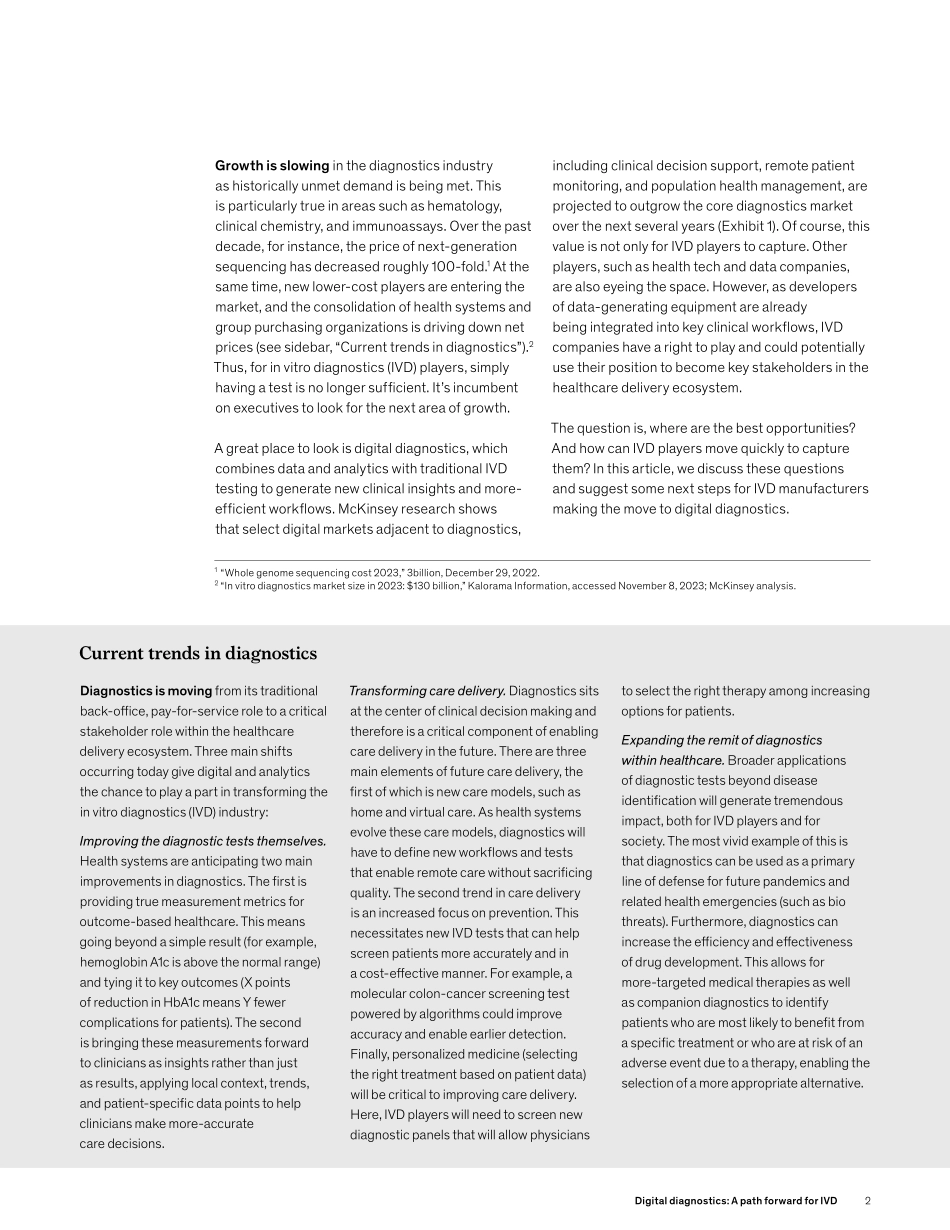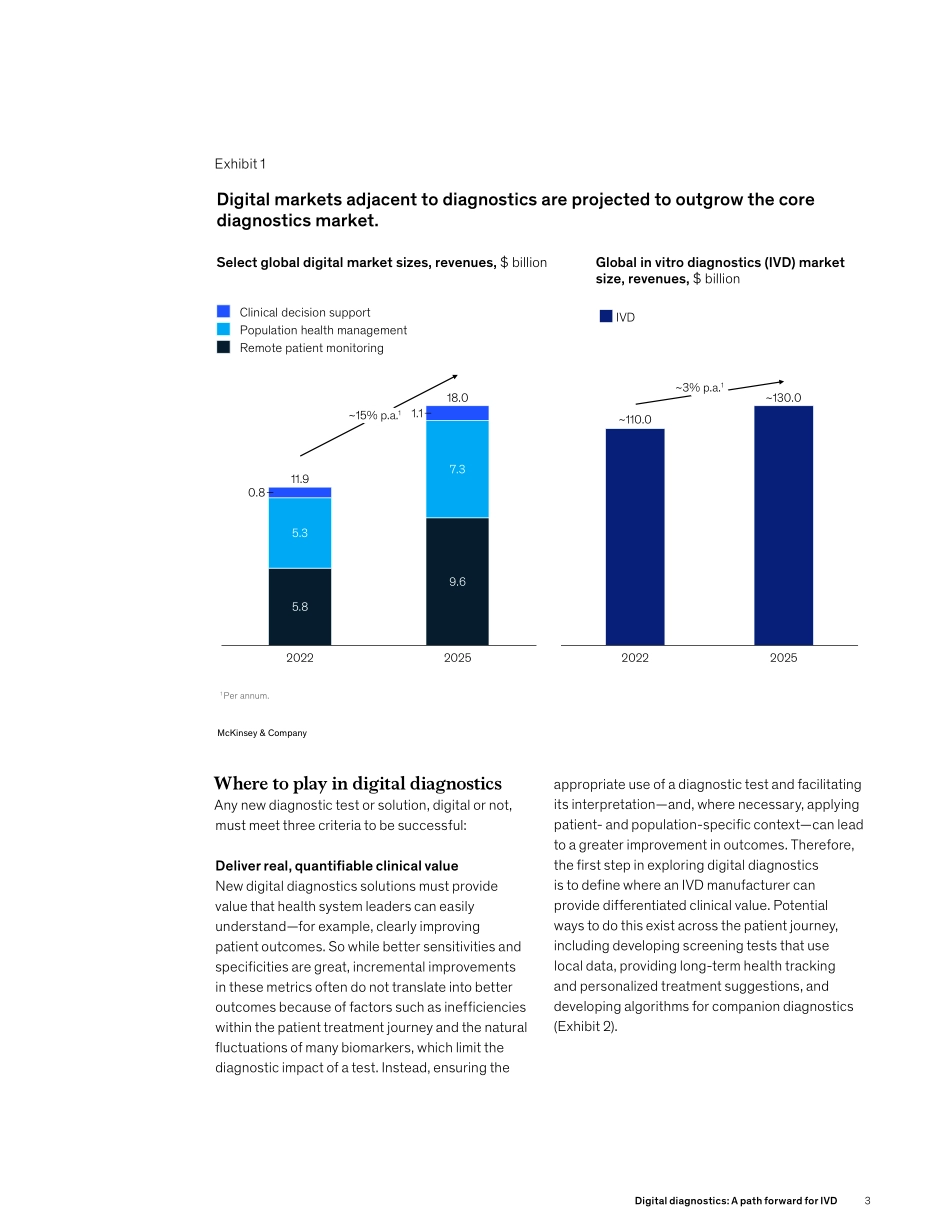December 2023Life Sciences PracticeDigital diagnostics: A path forward for IVD In vitro diagnostics players are being tested as their offerings are increasingly commoditized. Digital diagnostics offers a path to growth.This article is a collaborative effort by Mohammad Behnam, Andrei Dan, Chris Eakins, Ian Lyons, and Gerti Pellumbi, representing views from McKinsey’s Life Sciences Practice.Growth is slowing in the diagnostics industry as historically unmet demand is being met. This is particularly true in areas such as hematology, clinical chemistry, and immunoassays. Over the past decade, for instance, the price of next-generation sequencing has decreased roughly 100-fold.1 At the same time, new lower-cost players are entering the market, and the consolidation of health systems and group purchasing organizations is driving down net prices (see sidebar, “Current trends in diagnostics”).2 Thus, for in vitro diagnostics (IVD) players, simply having a test is no longer sufficient. It’s incumbent on executives to look for the next area of growth. A great place to look is digital diagnostics, which combines data and analytics with traditional IVD testing to generate new clinical insights and more-efficient workflows. McKinsey research shows that select digital markets adjacent to diagnostics, including clinical decision support, remote patient monitoring, and population health management, are projected to outgrow the core diagnostics market over the next several years (Exhibit 1). Of course, this value is not only for IVD players to capture. Other players, such as health tech and data companies, are also eyeing the space. However, as developers of data-generating equipment are already being integrated into key clinical workflows, IVD companies have a right to play and could potentially use their position to become key stakeholders in the healthcare delivery ecosystem. The question is, where are the best opportunities? And how can IVD players move quickly to capture them? In this article, we discuss these questions and suggest some next steps for IVD manufacturers making the move to digital diagnostics.Current trends in diagnosticsDiagnostics is moving from its traditional back-office, pay-for-service role to a critical stakeholder role within the healthcare delivery ecosystem. Three main shifts occurring today give digital and analytics the chance to play a part in transforming the in vitro diagnostics (IVD) industry:Improving the diagnostic tests themselves. Health systems are anticipating two main improvements in diagnostics. The first is providing true measurement metrics for outcome-based healthcare. This means going beyond a simple result (for example, hemoglobin A1c is above the normal range) and tying it to key outcomes (X points of reduction in HbA1c means Y fewer complications for patients). The second is bringing these measurements forward to c...


